|
TennisOne Lessons
Are You a Tennis Dinker? By David Smith In my last article, I focused on those patterns of learning that can help move players to the next level. The "Advanced Foundation" which I have alluded to in many articles deals with learning methods that allow a player to progressively get better…as opposed to stagnating at levels far below their actual potential. Those players who prescribe to a methodology similar to my Advanced Foundation and pursue tennis with a sincere dedication will not just reach the next level but advance to higher levels as they continue to play. However, there is a proliferation of players who not only stagnate at mediocre levels, but continue to play for decades within a distinctive level that has coined a specific term within its vernacular: Dinker. Almost as an ultimate putdown, players who resemble this term are seldom considered "skilled."
While there may be exceptions, most players who reside perpetually at the 3.0 and even the 3.5 levels often play tennis within a "dinking" mentality. (While many of these players may posses some weaponry other than dinking, many of these players who fail to move on to higher levels of play usually rely on some aspect of dinking in competition. There is a common saying in tennis: "Dinkers have tons of trophies." While this statement is usually more true than not, it is very misleading. The reason for this deception is that most dinkers only play tournaments at the 3.0 or 3.5 levels and they seldom, if ever, progress past these levels. Through years of experience in such levels, dinkers will initially beat developing players, those who are working on developing strokes associated with skilled play. Yet, players who are dedicated to learning and practicing within the Advanced Foundation eventually pass such dinkers and move on to higher levels of play. The "reward" of winning trophies often at the lower NTRP levels can be a strong enough influence to make such players balk at wanting to make necessary changes in their game to rise past such levels. The "hardware" won and the perceived recognition "earned" can create a satisfying accord in these players. Even as most of these players have the potential and are capable of moving past such levels of play, this perception of success can galvanize a player in this undeveloped form and prevent them from making the transition. Any length of time spent competing with such rudimentary methods makes changing those methods exponentially more difficult. Thus, players who follow the course of least resistance (in terms of learning simple skills instead of using more advanced grips and stroke patterns), will generally dig themselves so deep into this pattern of play they can't make necessary changes…even when they really want to move out of such levels of play. Those players who do advance in tennis recognize a progressive need to address several key issues associated with more highly developed play. These can include hitting:
As players develop, many of the possible ways to simply hit a tennis ball over the net will not meet the criteria that these higher levels of play demand. These elevated levels of play require a specific foundation within the area of each shot. This foundation is what makes up the Advanced Foundation. Players who practice or play using stroke mechanics that are not included in this foundation seldom, if ever, reach recognized levels of skilled play. How does one prevent becoming a Dinker? Tennis is probably the only sport that has the word "dinker" as part of its jargon. The word itself describes quite accurately the style of play or strategy such a player enlists. For those of you who might not be familiar with this term, dinking refers to the act of pushing the ball over the net with minimal spin or pace as opposed to stroking topspin or underspin shots with some essence of authority.
I honestly don't think any tennis player starts out wanting to become a "Tennis Dinker." But if this is true, then how does someone unintentionally become a dinker? This type of thinking made me begin to look at many of the tennis-teaching concepts on not just a progressive level, but also on a level that I would call a "Digressive Level." If no one starts out wanting to become a dinker, yet many do become just that, there must be an ensuing force causing this outcome. But what situations, teaching or learning methods, and/or tennis experiences result in players becoming dinkers? The answer to this question actually deals with a very simple concept: Gravity. Gravity-Reliant Players Most beginners play tennis within the context of gravity. That is, they hit balls hard enough and high enough to go over the net, but soft enough for the force of gravity to bring the ball back down into their opponent's court. Consequently, players learn to play within this constant force of nature by attempting to maintain a relative balance between velocity and gravity. As everyone discovers, when the ball is hit harder gravity alone can't be relied upon to land the ball safely onto the court. Those players who are taught methods that provide the use of spin discover they can increase the downward movements of the ball beyond that of the pull of gravity alone. Topspin is critical to increasing this downward movement of the ball.
Even as the opposite of topspin—slice or underspin—which if hit with enough velocity will work against gravity, the rotational action of the ball can actually be used to contribute to a ball's downward movement if used properly in specific situations. Typically, a ball hit hard enough with slice or underspin will actually rise in relation to the opposite downward movement that topspin produces. However, slice used correctly can also help a ball stay low while the stroke is still firm. For example, if a player hits a ball from a very low position near the net, he or she must hit the ball upward at enough of an angle to clear the net. However, if this shot is hit with too much velocity, the ball, of course, will sail long. Now, if the same player hits this low shot with underspin or slice, the ball's velocity is decreased with the force of the shot being changed from velocity to spin. Yet, even as the ball's velocity is decreased, the force of the stroke can still be solid. Thus, this shot will drop because gravity's force can work with greater effect on a ball because of its lower velocity. Another way the application of slice helps a ball drop is the action of air friction on the spinning ball. A spinning ball will tend to slow earlier than a ball with minimal spin. Air friction acts in both the movements of the ball in relation to its trajectory as well as slowing down a ball's velocity. Finally, one other principle of physics that applies to a tennis ball in flight is the gyroscopic control spin adds. The action of spin helps a ball maintain a true trajectory. A flat ball tends to act much like a knuckle ball in baseball: wind and other factors diminish the control of a flat ball in flight. A spinning ball will curve a controlled amount based on the amount of spin applied and the ball's velocity and trajectory. This does not count the added need for perfection during contact on flat balls. Hard, flat shots must be hit relatively perfect to achieve the desired trajectory. Any slight variance in racquet angle will adversely effect of the control of any flat shot. The mechanics of hitting a ball flat usually will require greater control. Even as good as professionals are, you will seldom see a tennis pro attempt to hit a ball perfectly flat. Typically, spin shots are not only easier to control; they are easier to reproduce mechanically.
How does all this talk about spin and velocity galvanize a player into becoming a dinker or not? If a player simply hit most shots relatively flat, the only principles this player can count on is gravity and the actual trajectory based on the racquet's angle at contact. If gravity is the only way a player can make a ball drop down into the court, then the only course of action for this player is to hit either hard shots low across the net, or, hit higher shots softer. Since hard hit balls are hard to control, the player usually will resort to hitting progressively softer balls for control and consistency. Thus the dinker is born! Creating "Gravity" Skilled players create their own gravity. Through the use of strokes that produce spin, they can hit the ball harder with greater acuracy and control. A good example of this is the myth of the "flat serve." So often, mediocre players are seen belting a flat serve only to get this serve in about once every lunar cycle! This serve is hit with terrific speed; however the ball lands not only outside the service box, but also often outside the entire court as well! In reality, pros like Pete Sampras, Greg Rusedski, or Andy Roddick who often hit serves reaching speeds of 130 miles per hour or more, hit those serves with tremendous spin. In fact, most pros who average such high-velocity serves hit with ball rotations between 2000 and 4000 rpm's. In other words, even at 120 miles per hour a typical Pete Sampras serve will be spinning somewhere near 50 revolutions per second or more! This is far from flat! It is this spin, coupled with a specific axis of rotation, which allows such hard serves to land in the service box. Without this spin, it would be next to impossible for any serve, hit at these velocities and hit from the normal height these players' reach, to ever land in the service box.
Dinkers, of course, rely only on the forces of gravity to keep balls in play. The result of such a hitting style on the serve is the aforementioned out-of-control flat serve followed by a puffball serve that a four-year-old could return. And, ironically, even at such slow speeds, these players still double fault with regularity! Most of these players have a fast windup on the second serve followed by a marked deceleration of the racquet head in order to hit the ball softly. This deceleration of the racquet head makes a repeatable swing very difficult. Thus serving dinkers often find themselves guessing where the ball will land…even on such soft second serves! This pattern of learning is why players, even those who have been playing tennis for years, seldom have their serve (or other strokes hit in the same dinking fashion!) improve. In fact, it is not uncommon to see experienced 3.0 and 3.5 level players serving essentially the exact same way they did the first time they tried to serve! What Kind of Player do You Want to Be? Is this article hitting too close to home for you? If so, you are not alone! There are millions of players who fit this bill. Tennis is a great game, one that players should not just enjoy playing, but enjoy meeting the challenges the game has to offer. When we resort to dinking, we all but abandon those challenges and relegate ourselves as simply not being skilled enough to play at levels beyond the dinking state. In my experience, few players actually were lacking in necessary physical skills and athleticism to move past these rudimentary levels. Usually the culprit was in how these players were introduced to the sport. If players start off within patterns of play that promote flat strokes…or limit the player's understanding and development of spin, they will generally be sentenced to mediocrity for the rest of their tennis-playing career. Like the old Surgeon General's warning on cigarette packs years ago, perhaps their should be a similar warning on the ball can for tennis players: Warning: Hitting flat strokes will greatly reduce your tennis abilities and could lead to poor tennis health and dinking! Next, breaking out of the dinking mold, an instructional road map to high speed tennis. Your comments are welcome. Let us know what you think about Dave Smiths' article by emailing us here at TennisOne.
|
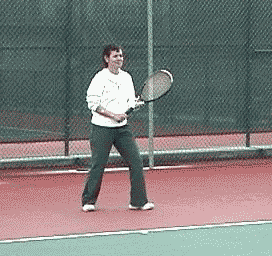
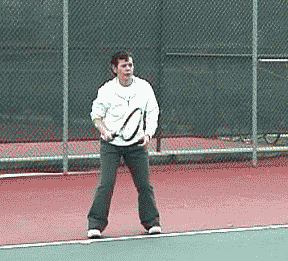
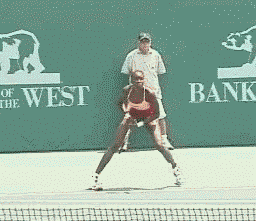
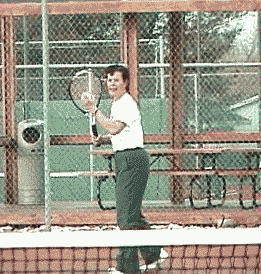
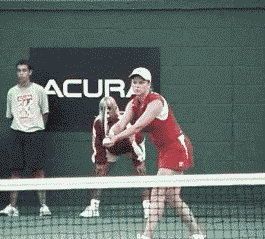
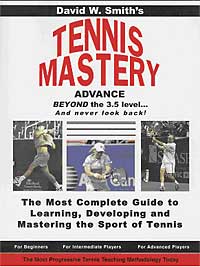
 Your comments are welcome. Let us know what you think about this article by
Your comments are welcome. Let us know what you think about this article by